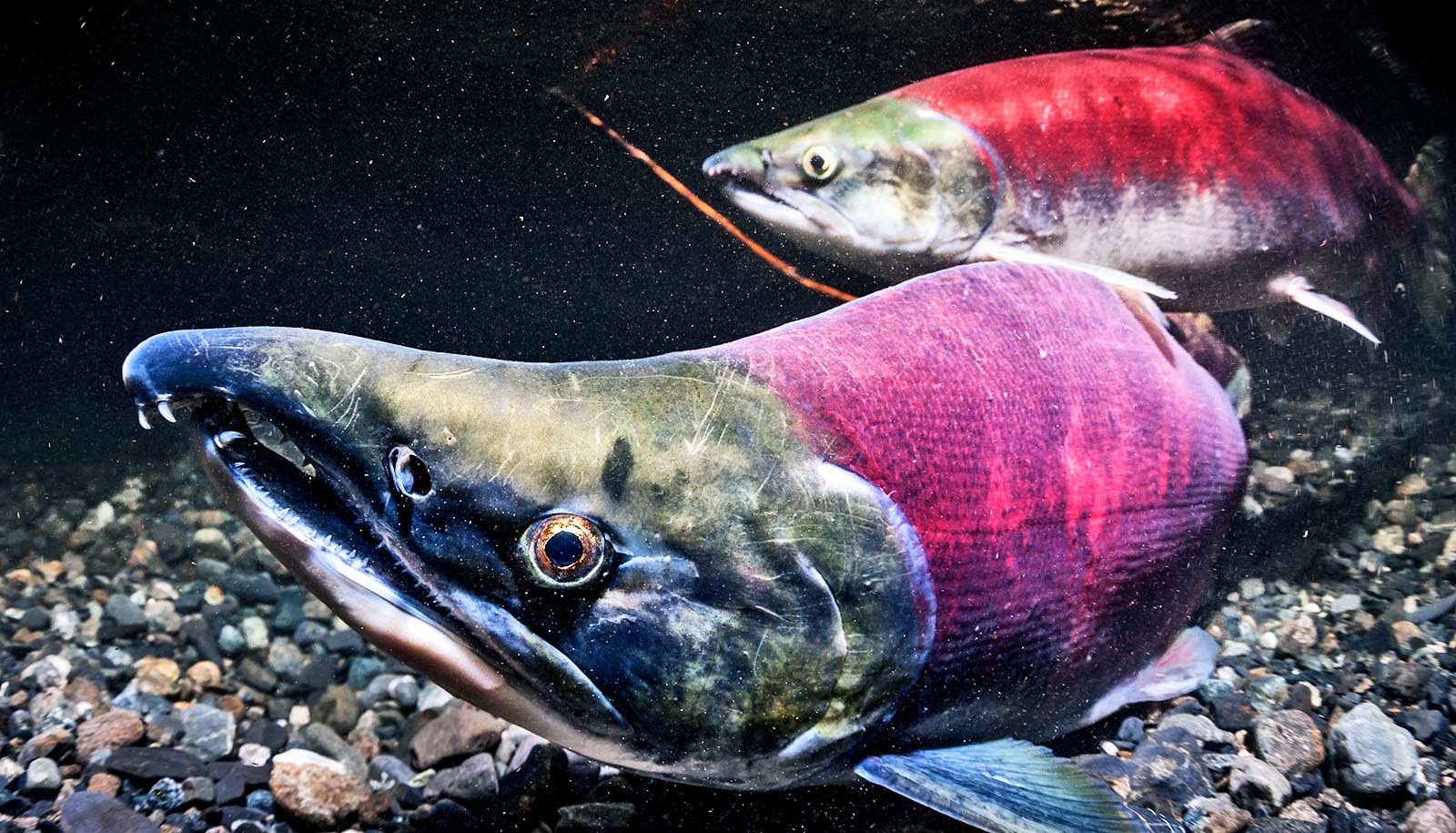As the global climate warms, water limitations are negatively affecting the growth of forest trees worldwide, new research shows.
The effect is most evident in northern climates and at high altitudes where cold temperatures are the main thing that limit tree growth.
“Our study shows that across the vast majority of the land surface, trees are becoming more limited by water,” says first author Flurin Babst, who conducted the research at the University of Arizona Laboratory of Tree-Ring Research and the Swiss Federal Research Institute WSL in Zurich.
“This is the first time that anybody has projected the tree growth responses to climate at a near-global scale.”
Small change, big surprise
For the study, which appears in Science Advances, researchers compared the annual growth rings of trees during two time periods, 1930-1960 and 1960-1990. The growth rings are wider when conditions are better and narrower when conditions are worse. Researchers took the ring-width measurements from trees at about 2,700 sites spanning every continent except Antarctica.
For those two time periods, scientists also mapped average temperature, precipitation, and measures of drought stress on plants onto a grid covering the world’s temperate and boreal regions.
Adding tree-ring data to the map allowed scientists to see whether the changes in climate during the 20th century corresponded to the changes in growth of the world’s trees.
“We saw areas where, in the earlier part of the 20th century, temperature limited growth. But now we are seeing shifts towards moisture-drought limitation,” says coauthor David Frank, director of the Laboratory of Tree-Ring Research and a professor of dendrochronology.
Comparing 1930-1960 with 1960-1990, the average temperature increased 0.9 degrees F (0.5 degrees C) and the land area where temperature limited tree growth shrank by 3.3 million square miles (8.7 million square kilometers), an area about the size of Brazil.
“Satellites only see the leaves–they don’t see the wood where the carbon is stored.”
That such a small change in temperature would shift such a large area of trees from temperature-limited to water-limited was a surprise, Babst says. “That’s much more than I expected.”
The finding has implications for future forest and tree growth and for forest management, Franks says. “Reduced growth is indicative of increased stress on plants–which can be linked to mortality.”
Measuring ‘greenness’
Since the advent of systematic satellite observations in the late 1970s, scientists can now compare satellite images of the same place over time to study changes in vegetation growth over large areas and measure “greenness” in the images, which shows how leafy plants are and how fast they’re growing.
However, satellite observations weren’t available for most of the 20th century—and measuring greenness in a satellite image doesn’t tell how much individual plants grow from year to year.
“Satellites only see the leaves–they don’t see the wood where the carbon is stored,” Babst says. “We wanted to provide a wood perspective.”
He and colleagues wanted on-the-ground measurements of tree growth to compare to the data from satellites. When they used databases of tree-ring measures from all over the world for the time periods 1930-1960 and 1960-1990, they could see whether the average growth of trees had changed.
In addition, Frank says because the team’s research combines the substantial database of growth data from tree rings all over the world with global climate data for the same time period, the findings will help test and improve computer models of how climate affects vegetation.
Additional coauthors are from the University of Arizona; Strada Universităt in Suceava, Romania; the NASA Goddard Space Flight Center; Natural Resources Canada; and the Université du Québec à Montréal. The European Union-Horizon 2020 program and the Swiss National Science Foundation funded the research.
Source: University of Arizona



